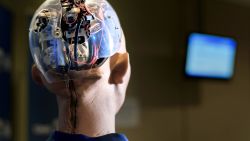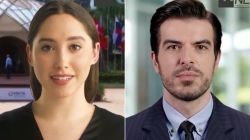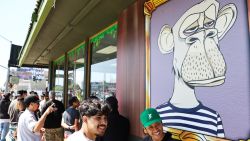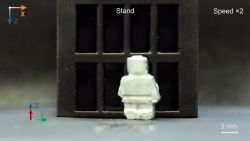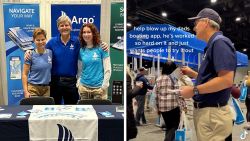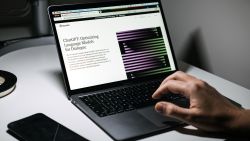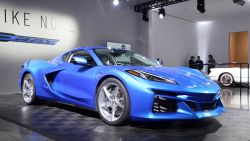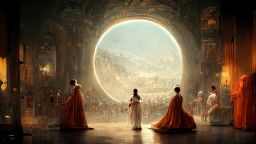As artificial intelligence becomes increasingly popular for generating images, a question has roiled the art world: Can AI create art?
At bitforms gallery in San Francisco, the answer is yes. An exhibit called “Artificial Imagination” is on display through late December and features works that were created with or inspired by the generative AI system DALL-E as well as other types of AI. With DALL-E, and other similar systems such as Stable Diffusion or Midjourney, a user can type in words and get back an image.
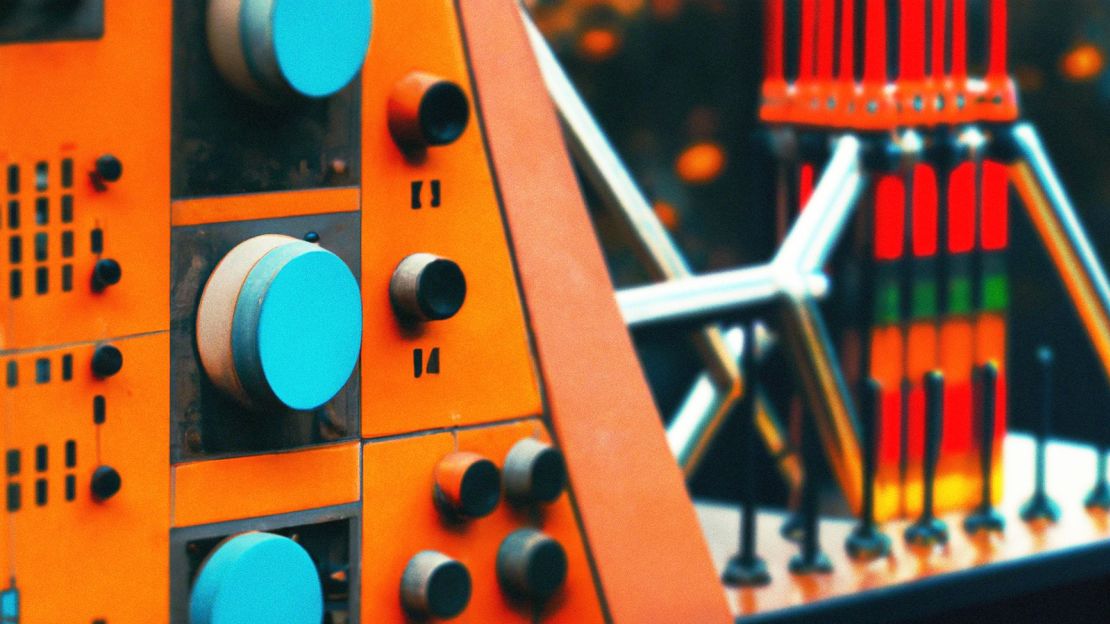
Steven Sacks, who founded the original bitforms gallery in New York in 2001 (the San Francisco location opened in 2020), has always focused on working with artists at the intersection of art and technology. But this may be the first art show to focus on DALL-E, which was created by OpenAI, and it is the first one Sacks has presented that concentrates so directly on work created with AI, he told CNN Business.
Using technologies such as 3D printing and Photoshop is commonplace in art. But new text-to-image systems like DALL-E, Stable Diffusion and Midjourney can pump out impressive-looking images at lightning speed, unlike anything the art world has seen before. In just months, millions of people have flocked to these AI systems and they are already being used to create experimental films, magazine covers and images to illustrate news stories. Yet while these systems are gaining ground, they’re also courting controversy. For instance, when an image generated with Midjourney recently won an art competition at the Colorado State Fair, it caused an uproar among artists.
For Sacks, generative AI systems like DALL-E are “just another tool”, he said, noting that throughout history artists have used past work to create new work in various ways.
“It’s a brilliant partner creatively,” he said.
“Artificial Imagination” spans several mediums and many different styles, and includes artists known for using technology in their work, such as Refik Anadol, and others who are newer to it. It ranges from Anadol’s 30-minute video loop of a computer’s take on an ever-changing nature scene to Marina Zurkow’s bright image collages, created with the help of DALL-E, which almost feel reminiscent of Soviet propaganda mixed with old-fashioned storybooks.
Sacks said the exhibit, which is being presented by bitforms and venture-capital firm Day One Ventures, is in many ways an educational show about the state of DALL-E and how artists are using AI.
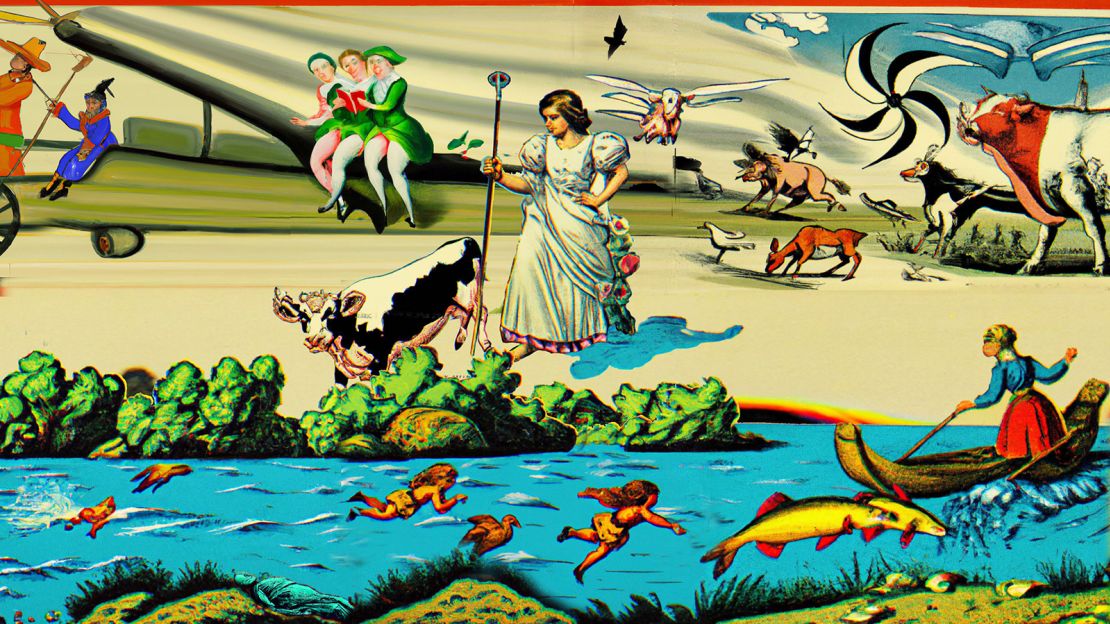
Many pieces are more straightforward in their use of AI, and DALL-E in particular, such as August Kamp’s 2022 print, “new experimental version, state of the art”, which looks like a close-up of a retro-futuristic stereo on a spaceship. Kamp said she began creating it by typing what she calls a primer — a series of words like “grainy”, “detailed”, “cinematic”, “movie still” — intended to evoke the aesthetic she’d like, which in this case was meant to look as if she was watching a movie and had just paused it, she said. Then she added words in hopes of generating electronic synthesizers that “looked as weird as they sound,” she said.
The final piece is a combination of 30 or so different generated images, which were outpainted section by section — a process that uses AI to expand the image by adding more elements to it. Kamp also used Photoshop to tweak the overall image.
Kamp pointed out that the general idea of art galleries give the sense that good art is scarce, but she sees generative AI tools like DALL-E as a way to get people to consider that art can be plentiful (such as by making it so anyone can wake up from a vivid dream, type in a description of what they were imagining, and generate an image expressing their thoughts).
“To me art is and should be very abundant because I see it as an expression of love and feelings, which I think are abundant things,” she said.
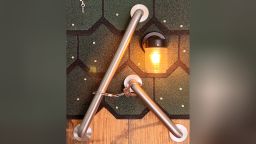
Some of the pieces on display use AI in a more indirect (and perhaps silly) fashion, such as a 2020 sculpture by Alexander Reben called “Cesi N’est Pas Une Barriere.” Reben used AI as a sort of art director: He used text generator GPT-3 and a custom set of algorithms to generate a description of a non-existent artwork that hangs on bitforms gallery’s wall. It includes the title, a fictional artist’s name — Norifen Storgenberg, who is listed as “Swedish, born 1973” — and text such as “It has a very domestic feel, and yet it is very oppressive” and “The use of police issue handcuffs is striking. In the context of society, they are used to restrain prisoners, and yet here, they are used to create a barrier between the viewer and the work.”
Reben built his sculpture, which also hangs on the wall, around the description, with elements including green roof shingles, a porch light, metal grab bars, and handcuffs.
“I wanted to just put it out there: Here are a range of artists, here are really different ways of presenting this kind of work, living with this kind of work, connecting with this kind of work,” Sacks said. “I wanted people to ask questions about it.”



